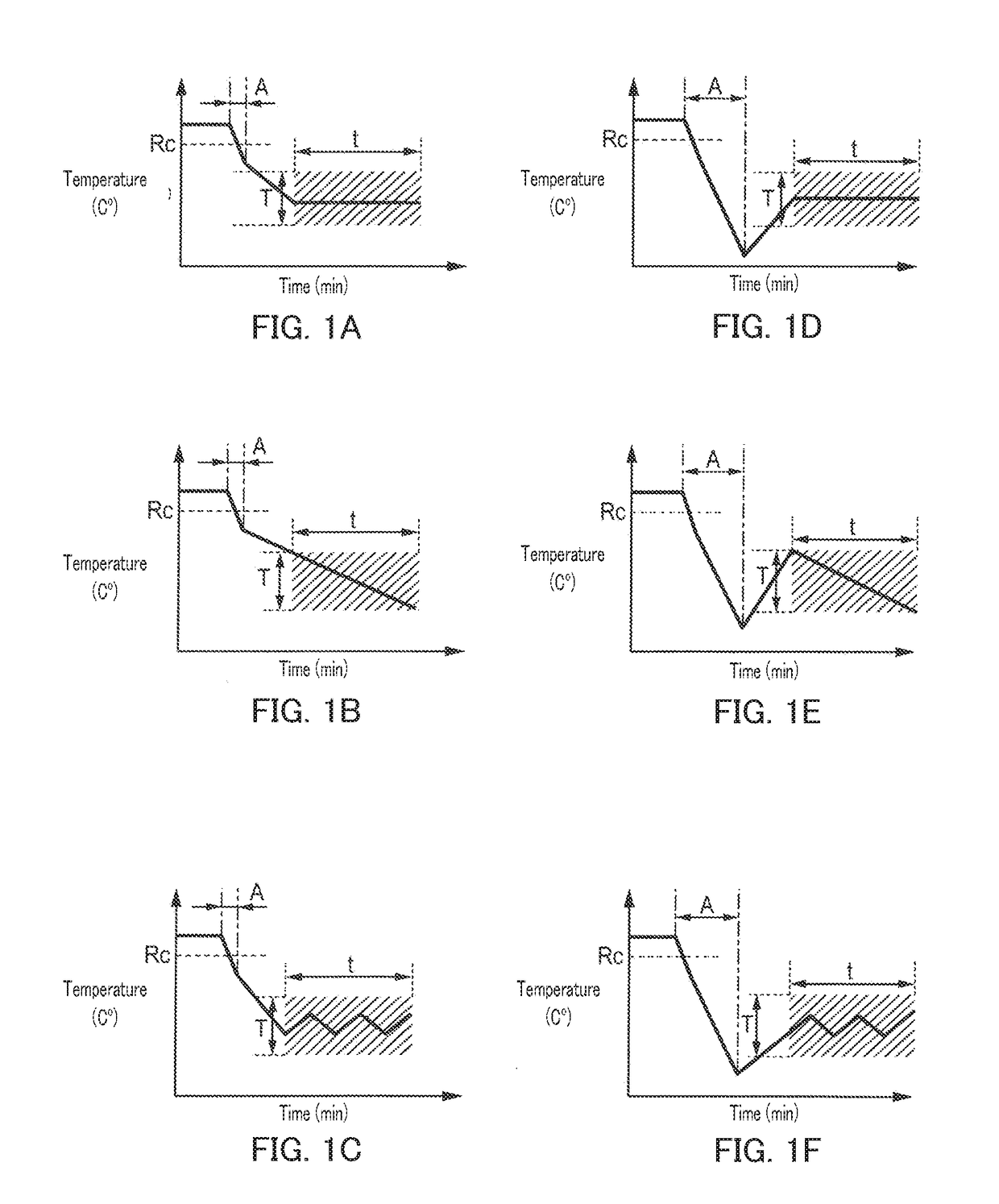Process for producing a toner
a toner and process technology, applied in the field of toner production process, can solve the problems of inconvenient deterioration of high-temperature storability, difficult to exhibit low-temperature fixing performance at a level required in recent years, image noise, etc., to suppress density unevenness of images, enhance low-temperature fixability, and reduce the effect of aging
- Summary
- Abstract
- Description
- Claims
- Application Information
AI Technical Summary
Benefits of technology
Problems solved by technology
Method used
Image
Examples
example 1
Production of Toner 1
[0209]Into a reaction vessel equipped with a stirring apparatus, a temperature sensor, and a condenser, 285 parts by weight (in terms of solids content) of the amorphous vinyl resin particle dispersion for a core, 40 parts by weight (in terms of solids content) of crystalline polyester resin particle dispersion 1, sodium dodecyl diphenyl ether disulfonate at a ratio of 1 mass % to the resin (in terms of solids content), and 2,000 parts by weight of deionized water were fed. At room temperature (25° C.), a 5 mol / L aqueous solution of sodium hydroxide was added thereto to adjust the pH to 10. Further, 30 parts by weight (in terms of solids content) of the coloring agent particle dispersion was added thereto and a solution prepared by dissolving 60 parts by weight of magnesium chloride in 60 parts by weight of deionized water was added thereto under stirring at 30° C. over 10 minutes. After the resultant solution was left to stand for 3 minutes, the temperature was...
examples 2 to 6
Production of Toners 2 to 6
[0213]Toners 2 to 6 were produced in the same manner as in Example 1 except that the heat treatment step was changed to schemes 2 to 6 listed in Table 1, respectively.
example 7
Production of Toner 7
[0214]Toner 7 was produced in the same manner as in Example 1 except that the heat treatment step was changed to scheme 6 listed in Table 1 and the cooling rate at Rc was changed to 2° C. / min.
PUM
| Property | Measurement | Unit |
|---|---|---|
| temperature | aaaaa | aaaaa |
| temperature | aaaaa | aaaaa |
| temperature | aaaaa | aaaaa |
Abstract
Description
Claims
Application Information
 Login to View More
Login to View More - R&D
- Intellectual Property
- Life Sciences
- Materials
- Tech Scout
- Unparalleled Data Quality
- Higher Quality Content
- 60% Fewer Hallucinations
Browse by: Latest US Patents, China's latest patents, Technical Efficacy Thesaurus, Application Domain, Technology Topic, Popular Technical Reports.
© 2025 PatSnap. All rights reserved.Legal|Privacy policy|Modern Slavery Act Transparency Statement|Sitemap|About US| Contact US: help@patsnap.com

